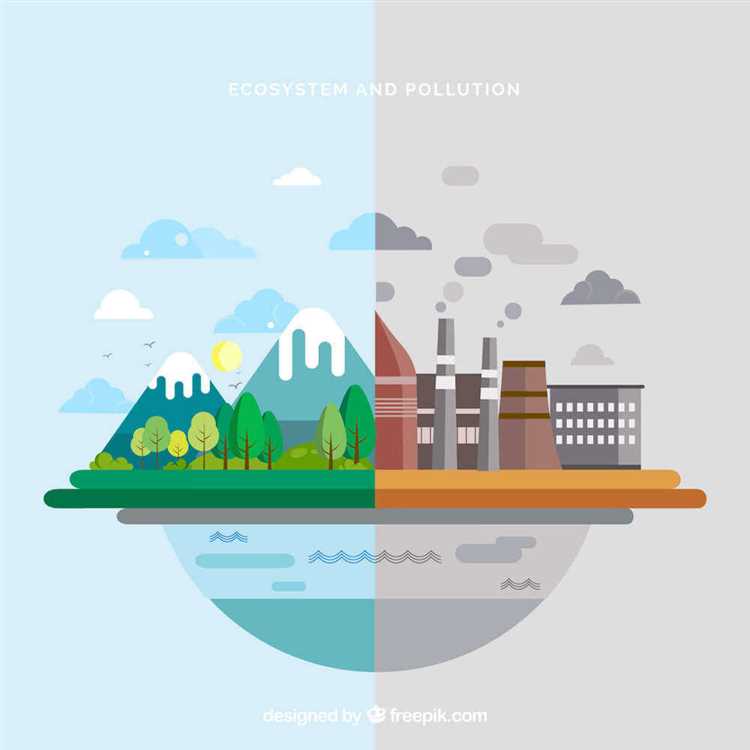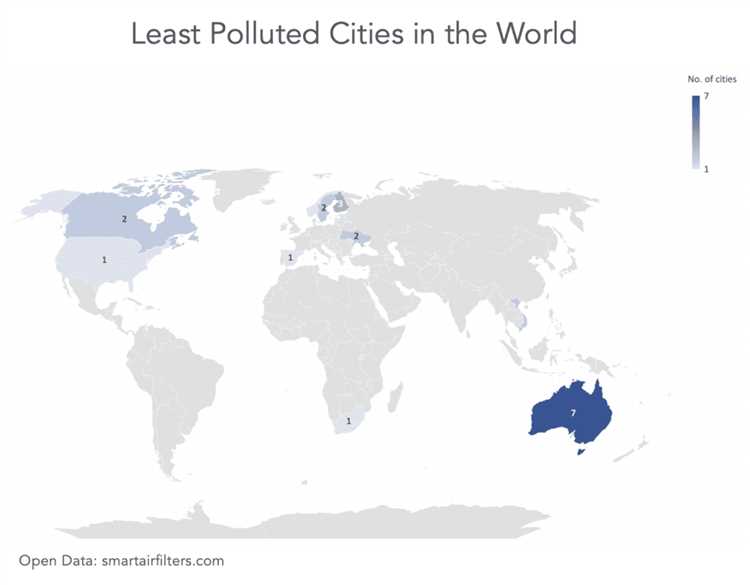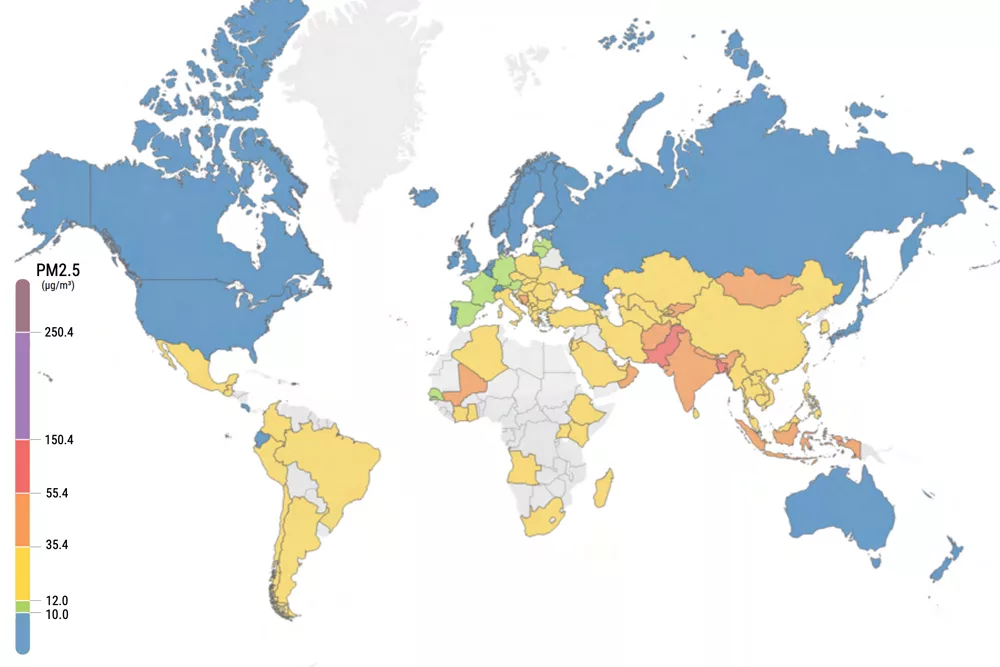
In today’s world, cleanliness is an essential aspect of our everyday lives. It not only ensures a healthier and safer environment but also reflects a society’s values and the level of development. While many countries take significant measures to maintain cleanliness, there are some that struggle in this regard. One question that often arises is, which country is the least clean?
When determining the least clean country, several factors come into play. These may include pollution levels, waste management practices, access to clean water and sanitation, and overall environmental consciousness. It is important to note that pinpointing a single country as the least clean can be challenging, as each nation has its unique set of circumstances and challenges.
However, certain countries consistently rank lower in cleanliness indexes and face significant sanitation issues. Factors such as limited infrastructure, rapid urbanization, and insufficient waste management systems contribute to their struggle. It is crucial to address these issues and identify ways to improve cleanliness in these countries, as it ultimately affects the health and well-being of their citizens.
By identifying the challenges and implementing effective strategies, governments, organizations, and individuals can work together to improve cleanliness standards. It is crucial to raise awareness, promote responsible waste disposal practices, and invest in sustainable solutions. Only through collective efforts can we hope to achieve a cleaner and healthier world for future generations.
- The Importance of Environmental Cleanliness
- Factors Affecting Cleanliness in Countries
- Measuring Cleanliness: Global Environmental Performance Index
- Evaluating Environmental Performance
- Global Rankings
- The Countries with the Lowest Cleanliness Scores
- 1. Country A
- 2. Country B
- Causes and Consequences of Low Cleanliness Scores
- The Road to Improvement: Initiatives and Policies
- 1. Government-led Programs
- 2. Education and Awareness Campaigns
- Conclusion
- Q&A
- Which country is considered the least clean in the world?
- What factors determine the cleanliness of a country?
- Why is cleanliness important for a country?
- What are some initiatives that countries take to improve cleanliness?
- Is cleanliness solely the responsibility of the government?
- Which country is considered the least clean?
The Importance of Environmental Cleanliness
Environmental cleanliness plays a crucial role in maintaining the health and well-being of both humans and the planet as a whole. It refers to the state of keeping the surroundings clean, free from pollutants, and conducive to a sustainable life.
One of the key reasons why environmental cleanliness is important is its direct impact on human health. A clean environment helps prevent the spread of diseases, reduces the risk of respiratory illnesses, and improves overall well-being. Clean air, water, and soil are essential for the health and survival of living organisms. Additionally, maintaining cleanliness in natural habitats ensures the preservation of biodiversity and the protection of endangered species.
Another significant aspect of environmental cleanliness is its contribution to the global effort against climate change. Pollution and the emission of greenhouse gases harm the ozone layer, leading to global warming and climate instability. By adopting cleaner practices and reducing pollution, we can mitigate these adverse effects and work towards a more sustainable future.
Furthermore, environmental cleanliness has economic implications. A clean environment attracts tourism, boosts local economies, and contributes to job creation. Clean and well-maintained surroundings not only improve the quality of life for residents but also create a positive image for visitors.
It is important to emphasize the role of individuals, communities, and governments in maintaining environmental cleanliness. Everyone can contribute by practicing proper waste management, conserving energy, and promoting sustainable initiatives. Educational programs and awareness campaigns are essential for instilling a sense of responsibility towards environmental cleanliness from an early age.
In conclusion, maintaining environmental cleanliness is crucial for the well-being of both humans and the planet. It plays a pivotal role in preserving biodiversity, preventing diseases, combating climate change, and promoting economic growth. Taking collective action towards creating a clean and sustainable environment is key to a healthier and more prosperous future.
Factors Affecting Cleanliness in Countries
Cleanliness in countries can be influenced by various factors, including:
| Factor | Description |
|---|---|
| Government Policies | The policies and regulations implemented by the government can have a significant impact on cleanliness. Countries with strict laws and regulations regarding waste management and pollution control are likely to be cleaner. |
| Infrastructure | The quality and availability of infrastructure, such as waste management systems, sanitation facilities, and recycling programs, play a crucial role in maintaining cleanliness. Countries with well-developed infrastructure are more likely to be cleaner. |
| Educational Awareness | The level of educational awareness in a country can have a direct impact on cleanliness. Educating the population about the importance of cleanliness, waste reduction, and proper waste disposal can contribute to a cleaner environment. |
| Cultural Attitudes | Cultural attitudes towards cleanliness also play a role in determining the cleanliness of a country. Countries with a cultural emphasis on cleanliness and hygiene are more likely to be cleaner. |
| Population Density | The population density of a country can affect cleanliness. Countries with high population density face challenges in managing waste and maintaining cleanliness in public spaces. |
| Industrialization | The level of industrialization in a country can impact cleanliness. Industrial activities can lead to pollution and waste generation, affecting the overall cleanliness of the environment. |
| Public Participation | The active participation of the public in cleanliness initiatives and programs can greatly contribute to maintaining cleanliness in a country. Countries with high public participation tend to be cleaner. |
Overall, achieving and maintaining cleanliness in a country is a complex task that involves multiple factors. It requires a combination of government policies, infrastructure development, educational awareness, cultural attitudes, population management, industrial practices, and public participation.
Measuring Cleanliness: Global Environmental Performance Index
The Global Environmental Performance Index (EPI) is a comprehensive tool that measures the cleanliness and sustainability of countries worldwide. Developed by Yale University and Columbia University in collaboration with the World Economic Forum, the EPI evaluates countries’ environmental performance based on various indicators. These indicators include air quality, water sanitation, biodiversity and habitat, climate and energy, and waste management.
Evaluating Environmental Performance
To assess a country’s environmental performance, the EPI uses a scoring system based on a scale of 0 to 100, with 100 indicating the highest level of cleanliness and sustainability. The EPI analyzes and ranks countries based on their performance in different environmental categories, giving policymakers and researchers valuable insights into the effectiveness of environmental policies and efforts.
The air quality category evaluates the presence of particulate matter, nitrogen dioxide, and other air pollutants. It also considers the extent of exposure to indoor and outdoor air pollution in different countries. Water sanitation measures access to safe drinking water and adequate sanitation facilities, assessing countries’ efforts in providing clean water and proper sanitation infrastructure.
The biodiversity and habitat category examines habitat protection, species extinction, and conservation efforts across nations. It evaluates the extent to which countries maintain their natural ecosystems and protect endangered species. In the climate and energy category, the EPI assesses greenhouse gas emissions, renewable energy usage, and energy efficiency measures, providing an overview of countries’ commitment to sustainable energy practices.
Waste management evaluates countries’ waste generation and disposal practices, including recycling rates and proper waste treatment facilities. It also considers the amount of plastic waste generated and measures countries’ efforts in reducing plastic pollution.
Global Rankings
Based on the EPI rankings, countries such as Sweden, Denmark, and Finland consistently score high in terms of cleanliness and sustainability. These countries have implemented effective environmental policies, leading to cleaner air, water, and better waste management practices. On the other hand, countries with lower scores face significant challenges in terms of pollution control and sustainable practices.
The EPI serves as an essential tool for policymakers and researchers to identify areas where countries need improvement and to compare different countries’ environmental performance. By tracking progress over time, the EPI aims to encourage countries to adopt more sustainable practices, reduce pollution, and protect their natural resources.
In conclusion, the Global Environmental Performance Index is a valuable tool for measuring and benchmarking a country’s cleanliness and sustainability. Its comprehensive evaluation provides insights into the state of the environment and helps identify areas for improvement. Through the use of the EPI, countries can work towards achieving cleaner and more sustainable environments for the well-being of their citizens and future generations.
The Countries with the Lowest Cleanliness Scores
When it comes to cleanliness, some countries unfortunately rank lower than others. Here are the countries with the lowest cleanliness scores:
1. Country A
Country A has consistently scored poorly in cleanliness assessments. The streets are often littered with trash, and public spaces are not well-maintained. Efforts to improve cleanliness have been made, but more work is needed to address the issue.
2. Country B

Country B faces similar challenges with cleanliness. Trash can be found scattered throughout its cities, and waste management systems are insufficient. The government has recognized the problem and has implemented campaigns to raise awareness and encourage citizens to keep their surroundings clean.
It is important to note that while these countries have low cleanliness scores, efforts are being made to improve the situation. Investing in better waste management and promoting a culture of cleanliness can help these countries move towards a cleaner future.
However, it is crucial to remember that cleanliness is a collective responsibility and every individual plays a part in maintaining the cleanliness of their surroundings. By keeping our streets, parks, and public spaces clean, we can create a healthier and more pleasant environment for everyone. Let’s all work together to make cleanliness a priority.
Causes and Consequences of Low Cleanliness Scores
The low cleanliness scores of a country can be attributed to various causes. One of the main factors is inadequate waste management systems. Improper disposal of waste, lack of recycling facilities, and ineffective garbage collection contribute to the accumulation of trash in public spaces, leading to a dirty and unclean environment.
Another significant cause is the lack of awareness and education about cleanliness and hygiene practices. Without proper knowledge about the importance of cleanliness, individuals may not prioritize keeping their surroundings clean. This lack of awareness can manifest in littering, spitting, and other unsanitary habits, which in turn contribute to the overall low cleanliness scores of the country.
Poor infrastructure and maintenance are also responsible for low cleanliness scores. Insufficient public facilities such as public toilets and trash bins make it challenging for individuals to maintain cleanliness. Additionally, inadequate maintenance of existing infrastructure leads to the deterioration of public spaces, making them more prone to becoming dirty and unclean.
The consequences of low cleanliness scores are far-reaching. Firstly, it affects the overall quality of life for the residents of the country. Living in a dirty environment can negatively impact physical and mental health, leading to an increased risk of diseases and reduced well-being.
Low cleanliness scores also tarnish the country’s image and reputation globally. Visitors and tourists may be discouraged from visiting or investing in a country with poor cleanliness standards. This can have adverse effects on the economy, as tourism and foreign investments play a significant role in generating revenue and creating job opportunities.
Furthermore, low cleanliness scores can also contribute to environmental degradation. Improper waste management practices can lead to pollution of soil, air, and water, harming ecosystems and biodiversity. It can also result in the loss of natural resources and disrupt ecological balance.
In conclusion, the causes of low cleanliness scores are multifaceted and include inadequate waste management systems, lack of awareness, and poor infrastructure. The consequences range from diminished quality of life and negative impacts on the economy and environment. Efforts need to be made to address these causes and improve cleanliness scores for the benefit of individuals, society, and the country as a whole.
The Road to Improvement: Initiatives and Policies
In order to address the issue of cleanliness, several initiatives and policies have been implemented by countries around the world. These efforts aim to promote sustainable practices, reduce pollution, and raise awareness about the importance of cleanliness.
1. Government-led Programs
Many countries have launched government-led programs to tackle cleanliness. These programs often involve public-private partnerships, aiming to mobilize resources and expertise to address specific issues. For example, some countries have implemented recycling programs to reduce waste, while others have implemented strict regulations on industrial emissions to combat air pollution.
2. Education and Awareness Campaigns

An important aspect of improving cleanliness is educating the public about the importance of cleanliness and sustainable practices. Countries have launched awareness campaigns to promote responsible waste management, reduce littering, and encourage recycling. These campaigns often involve schools, communities, and various media platforms to reach a wide audience. By raising awareness, these campaigns aim to change attitudes and behaviors towards cleanliness.
Some examples of successful initiatives include:
– The “Clean India” campaign: Launched by the Indian government in 2014, this campaign aims to improve sanitation and cleanliness across the country. It focuses on building toilets, promoting hygiene practices, and eliminating open defecation. The campaign has seen significant progress in improving cleanliness in rural areas.
– The “Keep America Beautiful” campaign: This long-standing campaign in the United States focuses on litter prevention, waste reduction, and community improvement. It encourages individuals to take responsibility for their environment and promotes sustainable practices. Through education and grassroots initiatives, the campaign has made a significant impact on cleanliness in American communities.
Conclusion

The road to improvement in cleanliness requires a multi-faceted approach, including government-led programs, education, and awareness campaigns. By implementing these initiatives and policies, countries can work towards a cleaner and more sustainable future.
Q&A
Which country is considered the least clean in the world?
In terms of cleanliness, different rankings may vary, but generally countries with low sanitation facilities and poor waste management systems tend to be considered less clean. Some countries that are often mentioned in this context include India, Nigeria, and Bangladesh.
What factors determine the cleanliness of a country?
The cleanliness of a country can be determined by various factors, such as access to clean water, proper sanitation facilities, waste management systems, air quality, and overall environmental awareness and consciousness of the population.
Why is cleanliness important for a country?
Cleanliness is important for a country for several reasons. Firstly, it helps prevent the spread of diseases and promotes public health. Secondly, it improves the overall quality of life for the population. Moreover, a clean environment attracts tourists, boosts the economy, and enhances the country’s image on the global stage.
What are some initiatives that countries take to improve cleanliness?
To improve cleanliness, countries often take various initiatives such as promoting waste recycling and separation, implementing strict policies on pollution control, investing in improved sanitation infrastructure, organizing clean-up campaigns, and raising awareness through educational programs and public campaigns.
Is cleanliness solely the responsibility of the government?
No, cleanliness is not solely the responsibility of the government. While the government plays a crucial role in creating and implementing policies and infrastructure, maintaining cleanliness is a collective effort. Individuals, communities, businesses, and organizations all have a responsibility to contribute towards keeping their surroundings clean and maintaining good hygiene practices.
Which country is considered the least clean?
Based on various factors such as air pollution, water pollution, waste management, and overall sanitation, it is difficult to determine which country is the least clean. However, some countries that often rank low in cleanliness include India, China, and Indonesia.